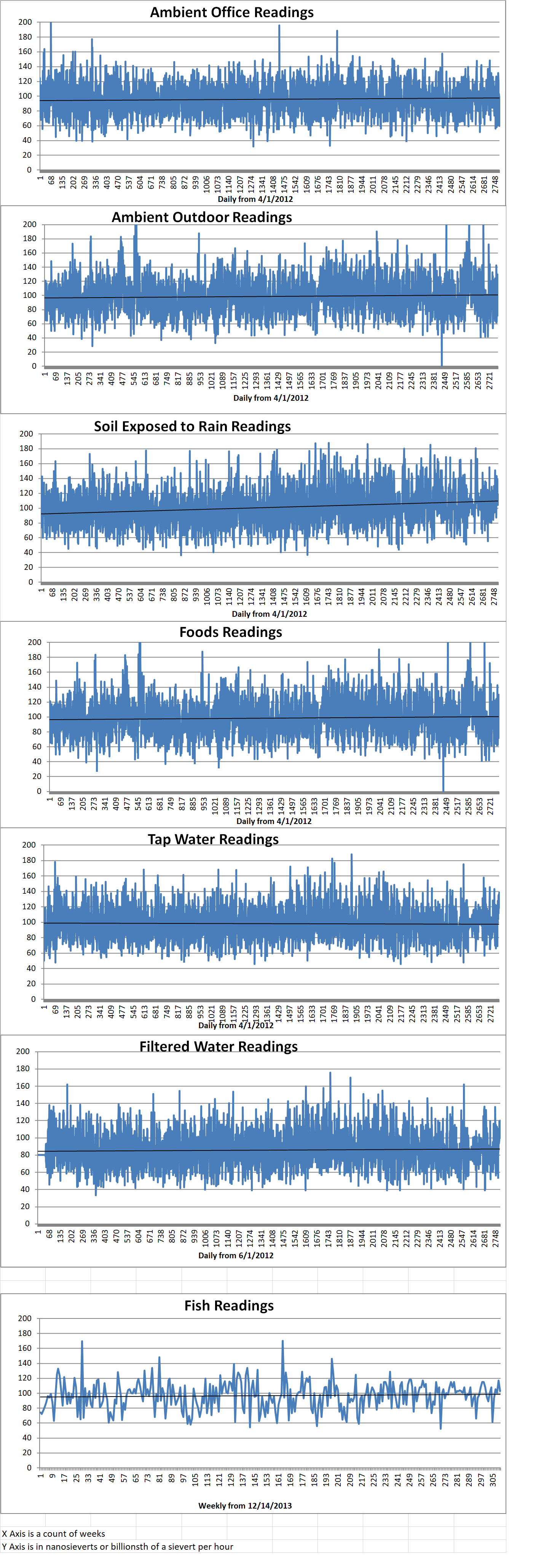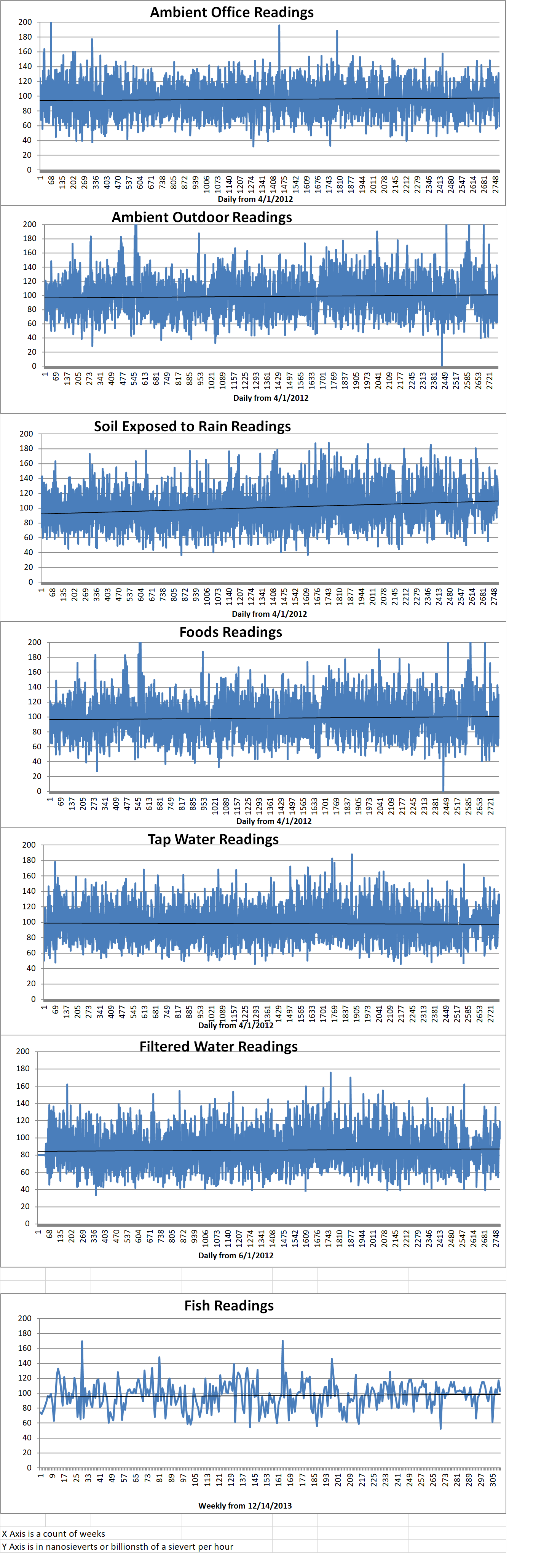Energy Northwest is a public agency that owns and operate the single nuclear power reactor in Washington State called the Columbia Generating Station near Richland on the Hanford Nuclear Reservation. This reactor produces electricity for one and a half million customers including some in Seattle. In total, Energy Northwest is suppling power to twenty-seven public power utilities in Washington. The Columbia Generating Station is the third largest producer of electricity in the Northwest. It has a gross output of about one thousand two hundred megawatts.
Energy Northwest is now considering whether or not there would be interest in the construction of a small modular reactor (SMR) at the Station. The company spent two million dollars to study the feasibility of adding a SMR to the Station. Their study analyzed the probable demand for electricity in the Northwest in the future and possible sources.
Greg Cullen is Energy Northwest’s general manager of energy services and development. He said, “We want to make sure that the utilities agree there is a need for this (and) that the politicians and the public believe this is something they want, because they care enough about the climate and carbon that they want this as a solution.” He added that they are just beginning discussions with officials and the public about interest in constructing an SMR at Hanford. Cullen stressed that Energy Northwest is going to review all viable options to provide for future energy demands. They will be looking at renewables as well as SMRs.
Energy Northwest’s interest in SMRs is connected to the passage of the Clean Energy Transformation Act by the Washington Legislature. The Act sets standards for one hundred percent carbon-free electricity generation in Washington by 2045. The Act mandates the end of coal for power generation by 2025 and the end of natural gas generation for power by 2045.
Brad Sawatzke is Energy Northwest’s chief executive officer. He said, “That’s an ambitious and worthwhile goal, so we have to start planning today to ensure the people of Washington state have the right mix of energy sources tomorrow.” Cullen pointed out that both coal and natural gas have the advantage of being “firm” or able to be turned on or off as needed as opposed to the intermittent nature of renewables. SMRs share this capability.
Energy Northwest contracted Energy + Environmental Economics, a San Francisco-based consulting group, to conduct the study into providing deep reductions in the carbon emissions in the Pacific Northwest while maintaining reliable and economical power generation. Energy Northwest is especially interested in how nuclear power would fit into the new carbon free power generation portfolio mandated by the Act because of their experience in running the only nuclear power plant in Washington.
The commissioned study concluded that emission of carbon from power generation could be accomplished at a reasonable cost if there was enough on-demand capacity available. Energy Northwest has publicly discussed the idea of applying to extend the current license for the Columbia Generating Station. That license will expire in 2043 just before the deadline of 2045 in the Act.
The study said that it would cost one billion three hundred and fifty million dollars less a year than renewables and batteries to provide needed electricity after 2043. SMRs could also function as backup for renewables reducing the cost of producing electricity.
Author: Burt Webb
-

Nuclear Reactors 752 – Energy Northwest Is Considering Placing One Or More SMRs At The Columbia Generation Station
-

Geiger Readings for Feb 03, 2020
Ambient office = 72 nanosieverts per hour
Ambient outside = 122 nanosieverts per hour
Soil exposed to rain water = 119 nanosieverts per hour
Tomato from Central Market = 103 nanosieverts per hour
Tap water = 139 nanosieverts per hour
Filtered water = 120 nanosieverts per hour
-
Nuclear News Roundup Feb 03, 2020
Japan panel finds Fukushima nuclear plant water release to sea is best option. Cbc.ca
US renews waivers on Iran nuclear work. Aljazeera.com
Power outage hit San Onofre nuclear plant on Wednesday. Ocregister.com
UAE nuclear reactor ready; Qatar views it as a threat. Middleeastmonitor.com
-
Nuclear News Roundup Feb 02, 2020
Nuclear Care Partners invites Santa Susana Field Lab workers for information session dailynews.com
Kansai Electric to shut 2 nuclear reactors for security upgrades reuters.com
The International Atomic Energy Agency (IAEA) has launched a new, national cancer control project for Uganda that promises to continue the path towards stronger, more accessible cancer therapy services. World-nuclear-news.org
-

Geiger Readings for Feb 02, 2020
Ambient office = 60 nanosieverts per hour
Ambient outside = 112 nanosieverts per hour
Soil exposed to rain water = 108 nanosieverts per hour
White onion from Central Market = 130 nanosieverts per hour
Tap water = 119 nanosieverts per hour
Filtered water = 104 nanosieverts per hour
-
Nuclear News Roundup Feb 01, 2020
Latest North Korea quake shows legacy of instability at nuclear test site: South Korea channelnewsasia.com
North bypass road nears completion, nuclear shipments to cease for maintenance currentargus.com
Idaho delegation visits Georgia as preparations continue for growing nuclear industry postregister.com
-

Geiger Readings for Feb 01, 2020
Ambient office = 98 nanosieverts per hour
Ambient outside = 120 nanosieverts per hour
Soil exposed to rain water = 119 nanosieverts per hour
Red bell pepper from Central Market = 115 nanosieverts per hour
Tap water = 136 nanosieverts per hour
Filtered water = 118 nanosieverts per hour
Dover sole – Caught in USA = 103 nanosieverts per hour
-

Nuclear Reactors 751 – Russian Scientists Are Working On A Hybrid Fusion-Fission Reactor Design That Uses Thorium As A Fuel.
A collaboration of Russian scientists at Tomsk Polytechnic University, All-Russian Scientific Research Institute of Technical Physics (VNIITF), and Budker Institute of Nuclear Physics of SB RAS has just published a report on a new type of nuclear reactor. The reactor is what is being called a “hybrid” reactor. It utilizes both nuclear fusion and nuclear fission to generate power. Most of the fuel for this new reactor is thorium. Computer simulations of the new design have been run. They show that an “energy-generating blanket” would be able to produce high power in a small footprint and it would not generate much radioactive waste.
This new reactor design offers middle-ground solutions with respect to fuel, reactor design and safety. Thorium is one of the most abundant elements of its kind. It is more abundant that tin which is very common and accessible. On the other hand, uranium which is the primary nuclear fuel today is not rare but it is also not readily and easily available.
The hybrid thorium reactor uses thorium-plutonium pellets in a high-temperature, gas cooled reactor. The published report about the new design does not say which specific gas is used for cooling but both carbon dioxide and helium gases have been used in other reactor designs for cooling. Gas cooled reactors offer a way in which unenriched uranium can be used to generate power. This makes such reactors more accessible and affordable to many countries that do not have the capacity to enrich uranium. This new thorium reactor design could offer the same benefits.
Experts say that a subcritical reactor is safer than a critical reactor because it requires less containment and safeguards. Thorium is way less reactive and explosive than uranium or plutonium.
The reactor is relatively small when compared to conventional light water nuclear power reactors. The plasma chamber is only about forty feet long. Combining a fusion reaction with a fission reaction maximized the efficiency of the reactor. It will be much simpler to develop this technology than a tokamak pure fusion reactor.
There will be less time necessary to reach full operation and it will be less volatile once in operation.
Andrei Arzhannikov is a chief researcher of Budker Institute of Nuclear Physics of SB RAS. He said “At the initial stage, we get relatively cold plasma using special plasma guns. We retain the amount by deuterium gas injection. The injected neutral beams with particle energy of 100 keV into this plasma generate the high-energy deuterium and tritium ions and maintain the required temperature. Colliding with each other, deuterium and tritium ions are combined into a helium nucleus so high-energy neutrons are released. These neutrons can freely pass through the walls of the vacuum chamber, where the plasma is held by a magnetic field, and entering the area with nuclear fuel. After slowing down, they support the fission of heavy nuclei, which serves as the main source of energy released in the hybrid reactor.”
Igor Shamanin is the head of the TPU Division of Natural Sciences and the TPU Isotope Analysis and Technology Laboratory. He said, “The hybrid reactor consists of two elements. The main part is the energy-generating blanket as the active zone of a nuclear reactor. It distributes nuclear fissile material that is part of nuclear fuel. Due to this, a fission chain reaction of heavy nuclei is possible. The second part is placed inside the blanket to generate neutrons that fall into the energy-generating blanket. The thermonuclear fusion reactions are generated inside this part filled with deterium plasma, releasing the neutrons. A feature of the hybrid reactor is that the operating blanket, where the fission reactions take place, is in the subcritical state (near-critical). Operating at a constant power level, a conventional reactor is in a critical condition, supported by a control and safety system.” -
Nuclear News Roundup Jan 31, 2020
Rolls-Royce Plans ‘Mini’ Nuclear Power Plants By 2029 Delivered In Chunks Via Trucks forbes.com
How China’s First Nuclear-Missile Submarine Was a Total Failure news.yahoo.com
A team from the World Association of Nuclear Operators (WANO) has concluded that unit 1 of the Barakah nuclear power plant in Abu Dhabi is ready to start up. World-nuclear-news.org
-

Geiger Readings for Jan 31, 2020
Ambient office = 103 nanosieverts per hour
Ambient outside = 105 nanosieverts per hour
Soil exposed to rain water = 104 nanosieverts per hour
Avocado from Central Market = 72 nanosieverts per hour
Tap water = 112 nanosieverts per hour
Filtered water = 100 nanosieverts per hour
